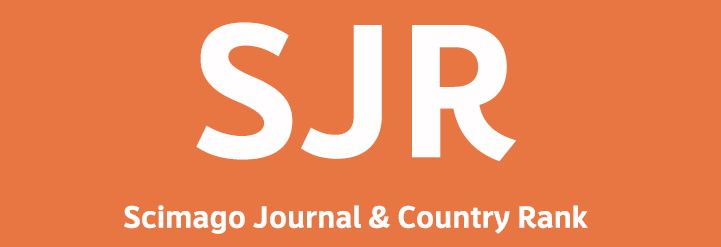Fungal Analysis of Aspergillus niger as an Alternative Biosurfactant for Microbial Injection-Enhanced Oil Recovery
DOI:
https://doi.org/10.29017/scog.v48i1.1694Keywords:
aspergillus niger, biosurfactants, liquid paraffin, MEOR, SMSS, carbon sourcesAbstract
This study aims to evaluate the ability of Aspergillus niger to produce biosurfactants as a cost-effective and environmentally friendly alternative for the microbial-enhanced oil recovery (MEOR) process. Biosurfactants were produced using different carbon sources: waste cooking oil, liquid paraffin, and tapioca flour in Stone Mineral Salt Solution media. The growth and production of biosurfactants from these sources were analyzed through oil displacement tests, emulsification activity, and surface tension measurements. Tapioca flour emerged as the best carbon source, achieving the highest oil displacement area of 6 cm and an emulsification index of 51.3%. These findings suggest that biosurfactants obtained from Aspergillus niger have significant potential for MEOR applications, providing an eco-friendly solution for enhanced oil recovery.
References
Abdullah, B., Maftukhah, S., Listyaningrum, E., & Faradhiba, F. (2018). Effect of some variable in cellulase production by Aspergillus niger ITBCC L74 using solid state fermentation. IOP Conference Series: Materials Science and Engineering, 316(1).
Afiati, F., Sari, M., Kusharyoto, W., Penelitian, P., & Lipi, B. (2014). Biosurfactant activity from Oil Sludge Bacteria MFS3.
Alpentri, Juli, N., & Siregar, S. (2001). Evaluation Of The Ability Of Fungal Isolates From One Of The Oil Wells In Minas To Degrade Petroleum.
Askari, M. (2018). Cassava Flour As A Media For The Growth Of The Fungus Candida Albicans.
Aswardi, A., Gevira, z, Cindy, C., Putri, M. D., Putri, F. H., & Taqwa, F. H. (2020). The Utilization of Tapioca Flour as an Alternative to Molasses Substitution in the Biofloc System Tilapia Cultivation in Suboptimal Land. Penerbit & Percetakan Universitas Sriwijaya.
Banat, I. M., Makkar, R. S., & Cameotra, S. S. (2000). Potential commercial applications of microbial surfactants.
Gozan, M., Fatimah, I. N., & Haris, A. (2014). Production of Biosurfactant from Pseudomonas aeruginosa using Ozonized Biodiesel Waste as Substrate for Enhanced Oil Recovery Riwayat Naskah. In Warta IHP/Journal of Agro-based Industry (Vol. 31, Issue 2).
Hamida, F. (2010). Effect Of Crude Gliserol Concentration (Biodiesel Waste) On The Growth Of Lysinibacillus Sphaericus Strain Hytap-B60 And The Emulsification Index Of The Earned Biosurfactants.
Juliyanto, E., Rofingah, J., Sejati, A. F., & Hakim, F. N. (n.d.). Determining the Surface Tension of Liquid Substances.
Junaini, Elvinawati, & Sumpono. (2019). Effect of Aspergillus niger Level on Bioethanol Production from Corm of Pisang Kepok (Musa paradisiaca L) (Vol. 2019, Issue 2).
L Welan, Y. S., & Mauboy, R. S. (2019). Isolation And Biodegradation Test Of Endogenous Bacteria In Used Oil Spill Soil In Kupang City. In Jurnal Biotropikal Sains (Vol. 16, Issue 1).
Laini, R. E., Napoleon, A., Munawar, D., Pengelolaan, M., & Daya, S. (2014). Isolation of Biosurfactant-producing Thermophilic Bacteria with Potential as MEOR (Microbial Enhanced Oil Re-covery) from Oil Wells in Angit River. In Jurnal Penelitian Sains (Vol. 17).
Marlina, L., & Ramdan, I. (2017). Identification Of Free Fatty Acid Levels In Different Types Of Vegetable Cooking OilS (Vol. 11, Issue 1).
Najiyah, D., Hidayati, N. V., & Sari, C. N. (2013). Benefits of Surfactants from Hydrocarbonoclastic Marine Bacteria for Petroleum Hydrocarbon Accelerators Process. Lembaran Publikasi Minyak Dan Gas Bumi, Vol. 47 No.2, 97–104.
Nugroho, A. (2006). Biosurfactan Production of Hydrocarbon User Bacteria by Adding Carbon Resources Variation. Biodiversitas Journal of Biological Diversity, 7(4).
Praharyawan, S., Susilaningsih, D., & Syamsu, K. (2013). Statistical Screening of Medium Components by Plackett-Burman Experimental Design for Biosurfactant Producction by Indonesia Indigenous Bacillus SPDSW17. In Article in Asian Journal of Microbiology Biotechnology and Environmental Sciences.
Rahayu, Y. P., & Prasetyo, A. (2020). Assay of Keratinolytic Bacterial Activity to Producing Biosurfactant. Pharmauho: Jurnal Farmasi, Sains, Dan Kesehatan, 6(2), 75–80.
Rengga, W. D. P., Riyadi, D. H. S., Bintang, A., & Kuntoro. (n.d.). Production and Process Study of Biosurfactant Rhamnolipide from Palm Oil Industry Waste and Its Derivatives Using Pseudomonas Aeruginosa.
Septihanny, R. K., Dwina, D., Jurusan, M., Kimia, T., Malang, N., Soekarno, J., & No, H. (2020). Literature Review: Preparation Of Biosurfactant Using Jatropha Oil By Bacillus Subtilis Bacteria. Distilat Jurnal Teknologi Separasi, 6(2), 504–511.
Sopianti, D. S., Herlina, H., & Saputra, H. T. (2017). Determination of free fatty acid level in cooking oil. Jurnal Katalisator, 2(2), 100.
Subekti, S., Rahayu Kusdarwati, dan, & Wahid Nur Yusuf. (2009). Isolation And Identification Gram Negative Bacteria At Lessions Of Gold Fish (Carassius Auratus) By Infestation Ectoparasite Argulus sp.
Wuryanti. (2008). Effect of Biotin Addition in Growth Media on Aspergillus niger Cell Production (Vol. 10, Issue 2).
Yunasfi, Susi Soraya Silaban, & Budi Utomo. (2020). Application of Fungi Aspergillus niger, Aspergillus sp 1, Aspergillus sp 2 to Increase the Growth of Rhizophora apiculata in Pangkalan Susu District, Langkat Regency. Talenta Conference Series: Agricultural and Natural Resources (ANR), 3(1).
Downloads
Published
Issue
Section
License
Copyright (c) 2025 © Copyright by Authors. Published by LEMIGAS

This work is licensed under a Creative Commons Attribution 4.0 International License.
Authors are free to Share — copy and redistribute the material in any medium or format for any purpose, even commercially Adapt — remix, transform, and build upon the material for any purpose, even commercially.
The licensor cannot revoke these freedoms as long as you follow the license terms, under the following terms Attribution — You must give appropriate credit , provide a link to the license, and indicate if changes were made . You may do so in any reasonable manner, but not in any way that suggests the licensor endorses you or your use.
No additional restrictions — You may not apply legal terms or technological measures that legally restrict others from doing anything the license permits.














